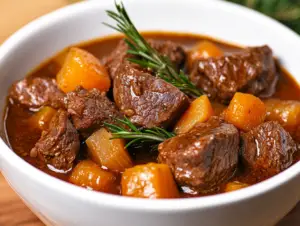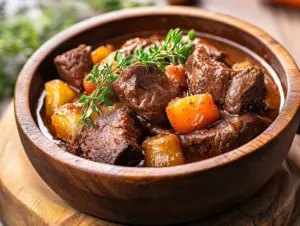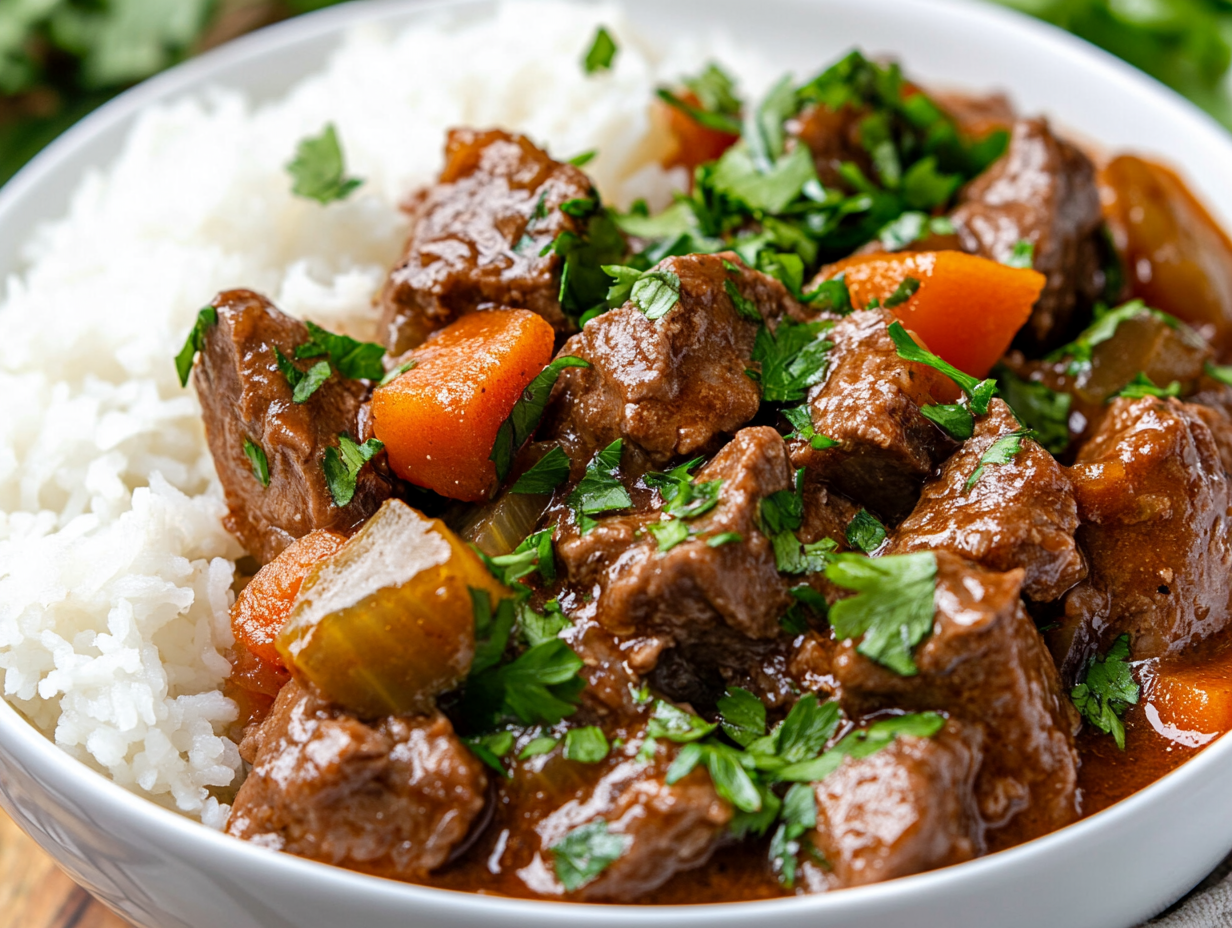When it comes to making a delicious and hearty stew in your Instant Pot, one question often arises: Do you have to brown stew meat before pressure cooking? Browning the meat is a commonly recommended step in many recipes, but is it really necessary? In this comprehensive guide, we will explore whether you need to brown stew meat, how it affects flavor and texture, and when it’s acceptable to skip this step.
What is Browning and Why Is It Important?
Browning refers to the process of cooking the surface of the meat at a high temperature to create a deep, caramelized layer. This browning happens due to the Maillard reaction, a chemical process that enhances the flavor of meat by creating a complex and savory crust. When you brown meat before cooking it in your Instant Pot, you’re locking in flavors that would otherwise be missed.
If you’re using an Instant Pot, the sauté mode allows you to brown the meat directly in the same pot, saving time and effort. For a step-by-step guide to browning meat effectively, check out this resource on how to brown meat in the Instant Pot without sticking.
Do You Have to Brown Stew Meat?
The short answer is no—you don’t have to brown stew meat before pressure cooking, but it is highly recommended. Browning adds a layer of flavor that makes a noticeable difference in the richness and complexity of your stew. Without this step, the stew may taste blander, lacking the depth that comes from caramelizing the exterior of the meat.
However, there are times when you might choose to skip browning. If you’re pressed for time or prefer a more straightforward cooking process, you can skip this step. In such cases, using rich ingredients like Worcestershire sauce, tomato paste, or even a splash of red wine can help compensate for the flavor loss. If you’re curious about the best oils to use for browning meat to ensure proper caramelization, take a look at this helpful guide on the best oils for browning meat.
Benefits of Browning Stew Meat Before Pressure Cooking

Browning isn’t just about looks—it has tangible benefits for the overall flavor and texture of your stew. Here’s why you should consider it:
1. Caramelization and Flavor Development
- Browning the meat causes a Maillard reaction, creating a flavorful crust. This caramelization adds depth to the stew that enhances every bite.
2. Sealing in Juices
- While it’s a myth that browning seals in juices completely, it does help the meat retain some moisture during the pressure cooking process. This is particularly important with tougher cuts of meat like chuck roast, which benefits from slow, moist cooking methods.
3. Building the Base Flavor
- Browning leaves behind bits of flavor, known as fond, at the bottom of the Instant Pot. Deglazing the pot after browning (using broth or wine) lifts these bits into the stew, enriching the final dish.
How to Brown Stew Meat in the Instant Pot
If you decide to brown your stew meat before pressure cooking, here’s a step-by-step guide to doing it correctly.
1. Prepare the Meat
- Begin by patting the stew meat dry with paper towels to remove excess moisture. Moisture prevents proper browning, leading to steaming instead.
- Season the meat generously with salt and pepper. This will help enhance the flavor as the meat browns.
2. Use the Sauté Mode on the Instant Pot
- Select the sauté mode on your Instant Pot and wait for the pot to display “Hot.” This ensures that the oil heats evenly and is ready to brown the meat.
- Add a high smoke point oil like canola or vegetable oil. Coat the bottom of the pot with enough oil to prevent sticking.
3. Brown the Meat in Batches
- Place the meat in a single layer, being careful not to overcrowd the pot. Overcrowding will reduce the temperature and cause the meat to steam instead of brown.
- Allow the meat to brown undisturbed for 3-5 minutes on each side, turning only once to ensure a golden crust forms. Remove the browned meat and set it aside.
4. Deglaze the Pot
- Once the meat is browned, add a splash of broth or wine to the pot to deglaze it. Use a wooden spoon to scrape up the brown bits stuck to the bottom. This step ensures that you don’t trigger the burn warning during pressure cooking and also adds a rich flavor to the stew.
When You Can Skip Browning
While browning offers clear flavor benefits, there are times when it’s acceptable to skip this step:
1. Time Constraints
- If you’re in a hurry, you might prefer skipping the browning step. Browning can add 10-15 minutes to your prep time, which can be significant when you need a quick meal.
2. Certain Recipes
- Not all recipes require the deep flavor that browning provides. For example, if you’re making a stew that relies more on the broth or vegetables for flavor, you can skip browning.
3. Compensating with Other Ingredients
- If you skip browning, consider enhancing the flavor of your stew by adding ingredients like tomato paste, soy sauce, or Worcestershire sauce to create a rich base for your stew.
Common Mistakes to Avoid When Browning Meat

Browning meat is a crucial step in building flavor for stews and other dishes, but there are common mistakes that can affect the outcome. Here’s a list of things to avoid when browning meat in your Instant Pot or on the stove:
1. Overcrowding the Pot
- Why it’s a problem: Placing too much meat in the pot at once lowers the temperature, causing the meat to steam rather than brown. Steaming results in gray, unappetizing meat that lacks the rich flavor browning provides.
- Solution: Brown the meat in small batches. This allows each piece to sear properly and develop a golden crust. Make sure there’s space between the pieces, which helps them cook evenly.
2. Not Patting the Meat Dry
- Why it’s a problem: If your meat is wet, the moisture will create steam when it hits the hot pan. This prevents proper browning and results in boiled, rather than seared, meat.
- Solution: Use a paper towel to thoroughly pat the meat dry before browning. Removing moisture ensures a better sear and more flavorful crust.
3. Using Too Little or the Wrong Oil
- Why it’s a problem: Not using enough oil or using oil with a low smoke point can cause the meat to stick or burn. This will lead to uneven browning and even burnt bits that can ruin the flavor.
- Solution: Use an oil with a high smoke point, such as canola oil, vegetable oil, or grapeseed oil. These oils can withstand the high heat needed for browning. Coat the bottom of the pot evenly with oil to prevent sticking.
4. Moving the Meat Too Soon
- Why it’s a problem: If you move or flip the meat too soon, it may stick to the pot and tear. This not only ruins the appearance but also prevents the meat from developing a proper crust.
- Solution: Be patient and allow the meat to sear undisturbed for 3-5 minutes on each side. The meat will naturally release from the pan when it’s properly browned. If it’s sticking, it’s not ready to flip yet.
5. Not Heating the Pot or Oil Properly
- Why it’s a problem: Adding meat to a pot that hasn’t been heated long enough will result in poor browning. The meat won’t sear, and the oil won’t reach the right temperature for proper caramelization.
- Solution: Set your Instant Pot to sauté mode and wait until the display reads “Hot.” This ensures the pot is at the right temperature. If you’re using a stove, heat the oil until it shimmers before adding the meat.
6. Skipping the Deglazing Step
- Why it’s a problem: After browning, flavorful bits of caramelized meat, called fond, are left on the bottom of the pot. If you skip deglazing, you miss out on these rich, concentrated flavors.
- Solution: After browning the meat, deglaze the pot by adding a small amount of broth, wine, or water and scraping up the browned bits with a wooden spoon. This step ensures those flavors are incorporated into the stew.
7. Using Cold Meat
- Why it’s a problem: Cold meat straight from the refrigerator will lower the temperature of the pot, causing it to steam rather than brown. This results in uneven cooking and a lack of proper searing.
- Solution: Let the meat come to room temperature for about 15-20 minutes before browning. This ensures a more even cook and better browning.
8. Neglecting to Season the Meat
- Why it’s a problem: If you forget to season the meat before browning, the meat will lack flavor, and you’ll miss an opportunity to build layers of taste in your dish.
- Solution: Season the meat with salt, pepper, and any other desired spices right before browning. This enhances the meat’s natural flavors and complements the stew.
How to Build Flavor Without Browning
If you decide to skip browning your stew meat, don’t worry—you can still achieve rich, savory flavors in your Instant Pot stew by using a variety of alternative techniques. Browning adds depth and complexity, but there are plenty of ways to enhance your stew without the caramelized crust.
Here are some key methods to build flavor without browning:
1. Use Flavorful Broth Instead of Water
- Instead of using water as the base liquid for your stew, opt for a rich beef broth or vegetable broth. Broth adds depth and a savory foundation that can elevate the overall taste of your stew.
- If possible, use homemade broth or stock, which tends to be more flavorful than store-bought versions. Even adding bone broth can contribute extra richness.
2. Add Umami Boosters
- Umami is the “savory” flavor often associated with meat, mushrooms, and soy-based products. If you’re skipping the browning step, try adding tomato paste, soy sauce, or Worcestershire sauce to intensify the stew’s flavor.
- Another option is to add a small amount of miso paste or a dash of fish sauce. Both provide a deep umami flavor that mimics the richness typically achieved through browning.
3. Layer in Fresh Herbs and Spices
- Herbs and spices can be transformative in any dish, especially when browning is skipped. Use fresh herbs like thyme, rosemary, and bay leaves to infuse your stew with earthy, aromatic flavors.
- You can also add warming spices such as paprika, cumin, or coriander for additional depth. These spices build layers of flavor and make your stew more complex.
4. Incorporate Acid for Brightness
- A splash of acidity can balance the richness of the stew and add brightness. Try adding a dash of red wine, vinegar, or lemon juice to cut through the heaviness of the broth and meat.
- Red wine, in particular, pairs beautifully with beef stew, adding a robust and fruity note that enhances the dish’s complexity.
5. Deglaze with Wine or Vinegar
- Even if you skip browning, you can still use the Instant Pot’s sauté function to deglaze the bottom of the pot with wine or vinegar after cooking vegetables like onions, garlic, and carrots. Deglazing lifts the caramelized bits from the bottom of the pot and enhances the flavor of the stew.
6. Add Vegetables for Extra Flavor
- Root vegetables such as carrots, parsnips, and celery not only provide texture but also contribute sweetness and depth to the stew. As they cook down, they release their natural sugars, which can replicate some of the complexity that browning offers.
- You can also roast the vegetables beforehand for added flavor.
7. Increase the Cooking Time
- Allowing the stew to simmer for a longer period can help develop flavors, even without the browning process. Cooking low and slow helps the ingredients meld together, producing a rich and hearty broth.
- Although the Instant Pot is known for speeding up the cooking process, adding a few extra minutes to your cook time can make a difference in how the flavors develop.
FAQs
Do You Have to Brown Stew Meat Before Using the Instant Pot?
No, you do not have to brown stew meat before using the Instant Pot. However, browning significantly enhances the flavor and texture of the stew. If you’re short on time, you can skip it, but be sure to use other flavor-boosting ingredients like tomato paste or Worcestershire sauce.
What Happens If You Don’t Brown Meat Before Pressure Cooking?
If you skip browning, your stew might lack the depth of flavor that comes from caramelized meat. While the stew will still be delicious, it may taste blander compared to a stew made with browned meat.
How Long Should You Brown Stew Meat in the Instant Pot?
Browning stew meat in the Instant Pot should take about 3-5 minutes per side. The goal is to develop a golden-brown crust without fully cooking the meat.
What’s the Best Oil for Browning Meat in the Instant Pot?
Oils with a high smoke point are best for browning meat. Use oils like canola, vegetable, or grapeseed oil. Avoid olive oil, as it has a lower smoke point and may burn during the browning process.
Can You Brown Frozen Meat in the Instant Pot?
No, it’s best to thaw meat before browning. Frozen meat won’t brown properly, and it will release too much moisture, causing the meat to steam instead of caramelize.
Conclusion
While browning stew meat before using the Instant Pot isn’t strictly necessary, it’s a highly recommended step that can elevate your dish. The Maillard reaction adds a rich, savory flavor to the stew that is hard to replicate through other means. However, if you’re short on time or prefer to keep things simple, skipping this step won’t ruin your stew. Just be sure to compensate by adding flavorful ingredients like broth, tomato paste, or fresh herbs.

